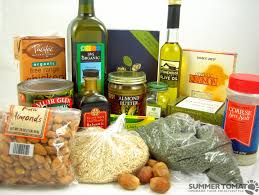 If diets don’t work, what ARE we supposed to eat?
If diets don’t work, what ARE we supposed to eat?
The answer is simple.
Whole. Real. Food.
Prepared with human hands.
With the intent to nourish.
If you’re accustomed to eating out of a box, preparing food can be daunting. I suggest cooking classes, tutoring from a chef or a good cook you know or even watching people cook on TV or You Tube.
Cooking isn’t even the best description of the process. Ideally half your diet comes from raw foods. I generally begin my day with fruit. I picked that up from the Diamonds, authors of Fit for Life. It works for me.
Fruit is simple to prepare. It often comes with its own package/protection so it’s easy to carry. Most fruit can be eaten out of hand, with no cutting. Even though some fruit requires cutting, that’s usually the end of the preparation.
Vegetables are also an important part of your raw food intake. That’s easy too. Salads are easy to make. Wash veggies; chop veggies; toss veggies. To save time and effort tossing, you can make platters of veggies for dipping. Making fresh dips is easy. Throw stuff in blender; blend; dip veggies in dip. All easy.
If you decide you want cooked veggies, there is another step: put in pot; steam. None of this is hard.
Of course you can juice all these fruits and veggies, but I’m pretty lazy about cleaning the juicer so I just eat the whole fruit and the whole vegetables. Also easy.
To eat healthy, it helps to start with a pantry of essentials. Over the years my pantry has changed considerably. I gradually shed the processed unfoods and replaced them with real ingredients that show themselves useful in many recipes.
Here are some of my pantry essentials and what I do with them:
- Lemons: I drink lemon water in the mornings to prime my digestive system. Lemon is an ingredient in my favourite salad dressings and veggie dips: hummus, babaganouj, and guacamole. Lemon complements lamb and fish.
- Garlic: in salad dressings, soups, stews, main dishes, spaghetti sauce; roasted with crackers and veggies; raw, sliced as medicine for warding off colds or poultice for healing wounds.
- Onions: in some form in almost all salads and main dishes. Green, red, white and yellow onions. Easy to grow.
- Olive oil, extra virgin: for salad dressings, dips, sautéing (at low temps). Buy from reputable company as olive oil is often diluted with cheaper oils. It should harden when refrigerated.
- Coconut oil, extra virgin: use for frying, baking oven fries, in place of butter or shortening in any recipe. Also use it for skin/hair, and teeth (oil pulling).
- Greens and Herbs, variety: spinach, arugula, mesclun (mixed greens), kale, baby lettuces, red leaf, green leaf, butter and romaine lettuces, fresh parsley, basil, oregano, mint. They all add crunch, enzymes and vital nutrients to any dish.
- Other fresh veggies: mushrooms, celery, carrots, with garlic and onion form the base of many soups, stews and main dishes. Broccoli, turnip, tomato, cauliflower, asparagus, cabbage are other favourites. I especially seek out local seasonal vegetables.
- Fruit, variety. Bananas are the perfect fast food. “An apple a day…” is proven to be more than just a nice quote. Organic berries are some of the world’s most nutritious foods and can be incorporated into any meal in any course.
- Avocado: great source of healthy fat. I use in guacamole, salads and desserts like “chocomole” See link.
- Nuts and nut milk. Use raw cashews to thicken salad dressings, desserts and non- dairy sauces. Nuts transform gluten-free desserts. Nut milk is a great dairy substitute that serves well in most recipes that call for milk.
By no means is this list exhaustive but most of these ingredients are valuable in my kitchen because they serve many purposes. I don’t have room in my small kitchen for too many one trick ponies.
I also must have in my kitchen at least one Aloe Vera plant, vital for treating burns. I must have baking soda, which I use to clean pots and pans and sinks, to prevent boiling eggs from cracking, and to brush my teeth. Vinegar is another multi purpose item in my pantry, mostly for cleaning inexpensively and safely.
Banishing all packaged food from your pantry might be too big a step for you. I certainly didn’t purge my pantry overnight. After decades of conscious purging, there are still a few items that are yet to be banished.
I suggest working on one thing at a time. When you run out of something, replace it with something from this list. For example when your cooking oil runs out, replace it with olive and/or coconut oil. When your salad dressings are gone, start making your own.
By taking these small steps eventually your pantry will serve your goal of eating for optimum health.

